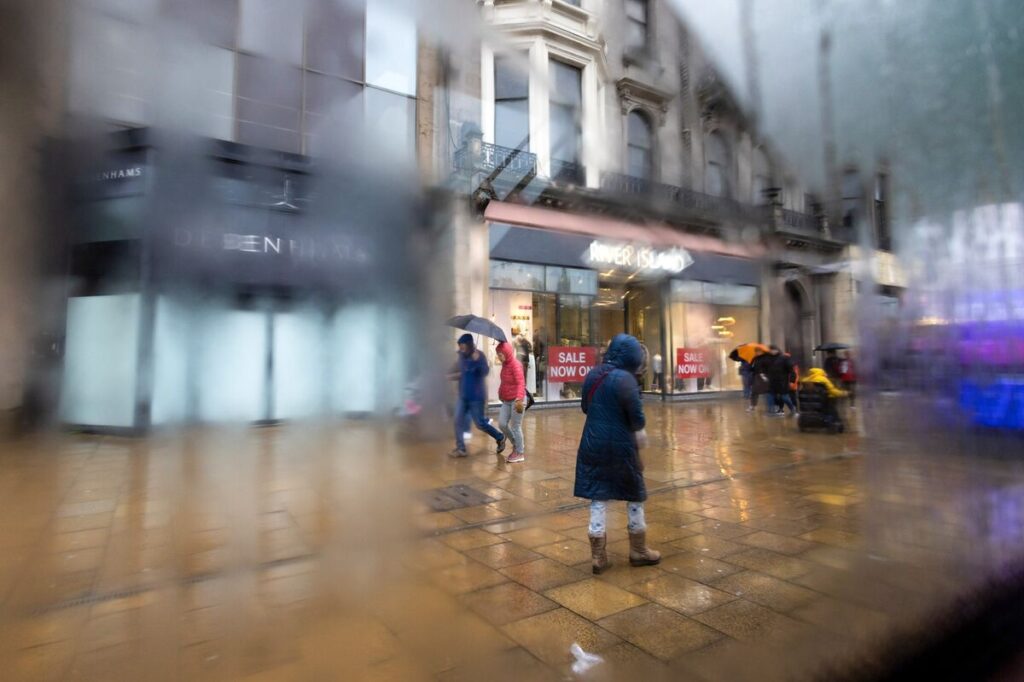In what appears as a disheartening development for the UK economy, the wet weather in April has significantly impeded retail activities, casting a shadow over economic growth prospects. Prolonged rainy spells across the country have not only deterred shoppers from visiting high streets but have also led to a downward spiral in sales figures, impacting overall economic momentum.
UK Economy Takes Hit in Rainy April
April’s unusually wet weather has taken a toll on the UK’s economic performance, with significant repercussions felt across various sectors. Retail, in particular, faced the brunt as reduced foot traffic led to lower than expected sales. Economists point out that the adverse weather conditions have stymied what was an emerging recovery from the economic downturn caused by the pandemic. This setback poses new challenges for policymakers and businesses, as they navigate a landscape marked by both natural and economic uncertainties.
The impact has been so pronounced that some economic analysts are revising their growth forecasts for the quarter downwards. With consumer spending accounting for a large portion of the UK’s GDP, the drop in retail activities has direct implications on the overall economic health. The situation is exacerbated by existing pressures such by inflation and global supply chain issues, which continue to test the resilience of UK businesses and consumers alike.
In response to these challenges, businesses are increasingly turning to online platforms to mitigate the impact of reduced physical shopper presence. kuitenkin, this shift is not without its challenges, as it demands significant investment in digital infrastructure and marketing. The ongoing economic scenario underscores the vulnerability of the UK economy to environmental factors and highlights the need for robust contingency strategies to shield against such unforeseen disruptions.
Retail Suffers as Weather Dampens Sales
April’s rainfall significantly exceeded average levels, leading to one of the wettest Aprils on record. This had a direct impact on the retail sector, particularly brick-and-mortar stores, which saw a sharp decline in customer footfall. Retailers, many of whom were hoping for a strong post-pandemic rebound, found themselves grappling with dwindling sales figures. High street shops, already struggling to compete with online giants, faced an uphill battle in attracting customers, further straining their operational viability.
The fashion and leisure sectors, heavily reliant on seasonal purchases, reported some of the most significant setbacks. Spring collections and outdoor products, usually popular during this time, remained on shelves, leading to surplus stocks and unplanned markdowns. This not only affected the revenue streams of these businesses but also had a ripple effect on the supply chain, affecting everyone from manufacturers to small local suppliers.
Amidst these challenges, some retailers are exploring adaptive strategies, such as enhancing their online presence or offering weather-resistant products and services. Additionally, there’s an increased focus on marketing efforts to draw customers back to stores during drier periods. These strategies are critical not just for survival but for the potential to tap into pent-up consumer demand once weather conditions improve.
As the UK reels from the economic impact of a particularly damp April, the path ahead seems fraught with challenges for the retail sector. The experience has highlighted the sector’s susceptibility to weather fluctuations and underscored the importance of adaptive strategies in today’s dynamic market environment. For now, both businesses and economists will be keeping a keen eye on the skies, hoping for better weather and better sales in the coming months.









